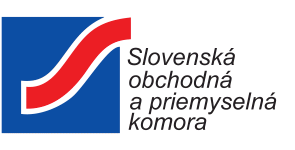Summary:
A Swiss university offers a fabrication method and tool to allow the production of hydrogels with tailored lubricity by controlling the degree of cross-linking of the polymer chains during the polymerization. Products such as contact lenses, condoms or catheters can be optimized with respect to their friction properties. Licensing agreements are sought with companies who want to optimize friction properties of their hydrogel products.
Description:
Background
Hydrogels are typically shaped in moulds. The surface properties are adjusted in a second fabrication step, which tunes the friction for a specific application. Functionalizing the gel surface directly in the mould could reduce the number of fabrication steps. Also, the ability to localize different areas in the mould with distinct frictional properties (patterning) opens new possibilities for applications. The invention of the Swiss university is able to fulfil this:
The degree of cross-linking of the polymer chains at the surface of hydrogels defines their lubricity and, thus, the friction of the hydrogel when sliding over a surface (e.g. skin). The degree of cross-linking can be adjusted by controlling the available amount of molecular oxygen during polymerization. Oxygen leads to cross-linking being inhibited more strongly than chain propagation, resulting in long, dangling, lubricious polymer chain-ends at the hydrogel surface. When the mould controls the oxygen supply, the lubricity of the contact surface can be tailored during polymerization, while the hydrogel bulk remains unchanged. The walls of moulds can be made from oxygen-permeable materials (e.g. polyethelyne (PE) foils). By adjusting the oxygen atmosphere around the mould, a controlled amount of oxygen can be supplied to the polymerization reaction to influence the lubricity of the surface layer:
- Low oxygen supply causes high cross-linking and high friction (see Fig 1, 1st picture)
- High oxygen supply inhibits cross-linking and lowers friction friction (see Fig 1, 2nd picture)
Spatial patterns of different lubricity can be introduced by modifying the permeability of the mould in predefined areas. Also, designed gradients in lubricity properties can be produced on the gel surface. Another possibility is lining the mould with an oxygen-enriched layer, which releases the oxygen during polymerization. For example, oxygen-enriched PE layers can be added to the mould in regions, specifically where higher lubricity is desired.
Potential product and market
Hydrogel based products such as contact lenses, condoms or catheters can be optimized with respect to their friction properties.
Desired cooperation
Licensing partners are sought who are well established manufacturer of hydrogel products and who would like to optimize and tailor the lubricity of their products.
Type (e.g. company, R&D institution…), field of industry and Role of Partner Sought:
The specific area of activity of the partner:
The partner is a well established manufacturer of hydrogels (contact lenses, condoms, catheters, etc).
The tasks to be performed by the partner sought:
The industry partner wants to optimize the performance of their products and at the same time facilitate the manufacturing process.
Stage of Development:
Available for demonstration
Comments Regarding Stage of Development:
Multiple compounds have been successfully synthesized in the lab
IPR Status:
Patent(s) applied for but not yet granted
Comments Regarding IPR Status:
Currently being nationalized in Europe, Japan, China, and USA
External code:
TOCH20211220001








